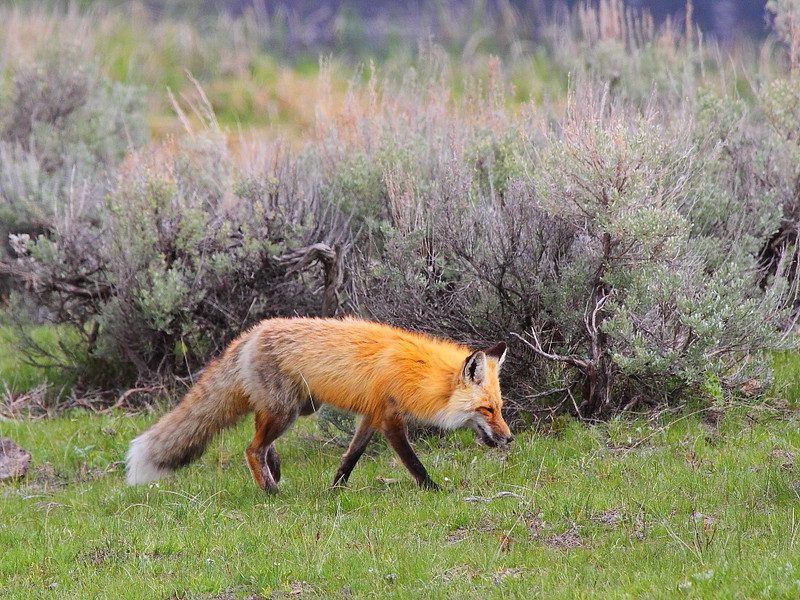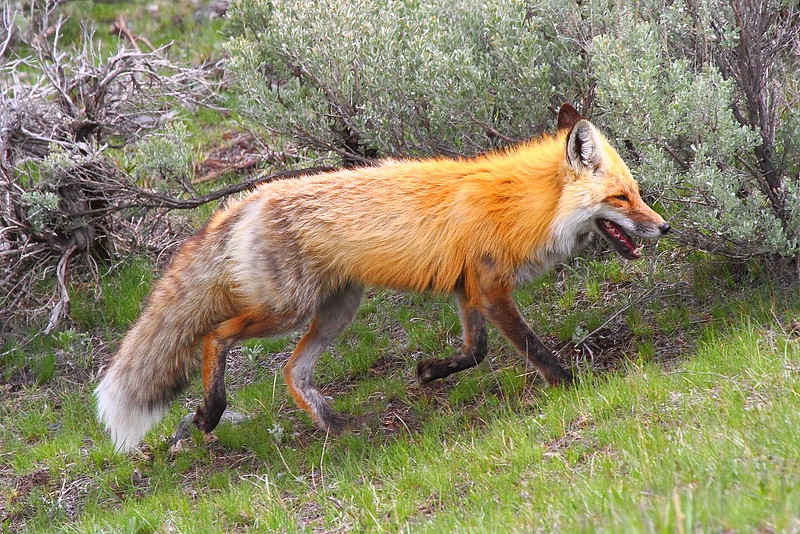[1. 簡介] [2. 旅遊建議/食宿交通] [3. Sightseeing] [4. Winter Activities] [5. Wildlife Watching] [6. Day Hiking] [7. Other Activities] [8. Who's Who in the Park] [9. More about the Park] [10. 感想]
5. Wildlife Watching
[5-1. Grizzly Bear at Dunraven Pass] [5-2. Black Bear Watching] [5-3. Wolf/Grizzly Bear/Coyote in Hayden Valley] [5-4. Wolf/Grizzly Bear in Lamar Valley] [5-5. Elk in Rut at Mammoth Hot Springs] [5-6. Coyote at Lower Geyser Basin] [5-7. Bighorn Sheep at Gardner River Canyon] [5-8. Lamar Canyon Pack] [5-9. Pronghorn in Rut] [5-10. Red Fox] [5-11. Trumpeter Swan] [5-12. American Dipper] [5-13. White Wolf] [5-14. Violet-Green Swallow] [5-15. Mountain Goat] [5-16. Moose] [5-17. Great Gray Owl] [5-18. Wapiti Lake Pack] [5-19. Osprey above Lamar River] [5-20. Young Grizzly Bear at Obsidian Creek] [5-21. Bull Elk at Grand Canyon] [5-22. Bighorn Sheep at Yellowstone River Picnic Area] [5-23. Pika at Sheepeater Cliff] [5-24. Grizzly Bear vs Bison at Hayden Valley] [5-25. Trumpeter Swan at Mary Bay] [5-26. Elk in Rut at Lake Village] [5-27. Grizzly Bear at Hayden Valley in Fall]
5-10. Red Fox
Yellowstone的犬科動物有三種,除了最容易看到的coyote (Canis latrans)與最多人想看到的wolf (Canis lupus)外,red fox (Vulpes vulpes)是另一種。要在Yellowstone看到red fox的難度經驗上比要看到wolf更高,跟這動物是nocturnal(夜行性)有關,所以不容易在白天看到。即使如此,red fox是個分布很廣的動物,主要在北半球,包括歐亞與北非都有這動物的蹤跡,稱不上是奇珍異獸。
即使red fox不算容易看到,我在Yellowstone這區域依然看過大約五次,其中有二次是在Grand Teton看到的。大致上,我每次都是在很意外的情況下看到這狐狸,我想這狐狸應該也覺得自己在很意外的情況下被我看到。看到的時間大都可以用「咻......一下就過去了」來形容,大都不超過一分鐘,所以時間窗口很短,要照出好的狐狸照除了狐狸得配合外,自己是否已經準備好也是關鍵。

Figure 5-10.1: 從sagebrush裡冒出的一隻red fox。

Figure 5-10.2: 邊走邊張牙。

Figure 5-10.3: 這是距離最近的一張。
像狐狸這種比較特別一點的動物通常都在公園北邊從Mammoth Hot Springs至Lamar Valley甚至一路到東北出口的這段路看到,比較少出現在地熱區附近,比如這狐狸就在從Slough Creek回到Tower Junction路上看到的。這狐狸當時看來是想過馬路到另一側去,所以一直在sagebrush裡幾乎不停地走,可以提供拍照的時間不超過一分鐘,如果還得花時間換長鏡頭的話,大概就只能照到狐狸離開時的屁股了。
論毛髮顏色的話,red fox的紅色大概是這些常見野生動物裡最鮮艷的,不像大部分的動物都是褐色還是灰色這類較低調的色系。不是很清楚這種鮮豔顏色對狐狸有啥好處,但頗符合狐狸精還是狐媚之類的形容詞。這動物的尾巴相對身體的比例也相當大,很少看到其他動物的尾巴這麼大,想要藏好確實很困難。總之,若有機會看到這狐狸,會發現這些跟狐狸有關的形容詞都還蠻貼切的。
Previous Next
[5-1. Grizzly Bear at Dunraven Pass] [5-2. Black Bear Watching] [5-3. Wolf/Grizzly Bear/Coyote in Hayden Valley] [5-4. Wolf/Grizzly Bear in Lamar Valley] [5-5. Elk in Rut at Mammoth Hot Springs] [5-6. Coyote at Lower Geyser Basin] [5-7. Bighorn Sheep at Gardner River Canyon] [5-8. Lamar Canyon Pack] [5-9. Pronghorn in Rut] [5-10. Red Fox] [5-11. Trumpeter Swan] [5-12. American Dipper] [5-13. White Wolf] [5-14. Violet-Green Swallow] [5-15. Mountain Goat] [5-16. Moose] [5-17. Great Gray Owl] [5-18. Wapiti Lake Pack] [5-19. Osprey above Lamar River] [5-20. Young Grizzly Bear at Obsidian Creek] [5-21. Bull Elk at Grand Canyon] [5-22. Bighorn Sheep at Yellowstone River Picnic Area] [5-23. Pika at Sheepeater Cliff] [5-24. Grizzly Bear vs Bison at Hayden Valley] [5-25. Trumpeter Swan at Mary Bay] [5-26. Elk in Rut at Lake Village] [5-27. Grizzly Bear at Hayden Valley in Fall]
[1. 簡介] [2. 旅遊建議/食宿交通] [3. Sightseeing] [4. Winter Activities] [5. Wildlife Watching] [6. Day Hiking] [7. Other Activities] [8. Who's Who in the Park] [9. More about the Park] [10. 感想]


4 comments:
哇 那條尾巴,真漂亮!
聽說狼的回歸狐狸也是很大的受益人,因為狐狸的主要競爭對手是比牠們體型稍大又很能適應各種環境的coyote, 現在coyote受到狼的牽制,等於間接的好到狐狸。
Pronghorn是另一個coyote變少的受益者.
為什麼? coyote應該不至於會獵食pronghorn吧
Coyote是pronghorn的主要predator,主要是吃剛出生不久的fawn.
Post a Comment